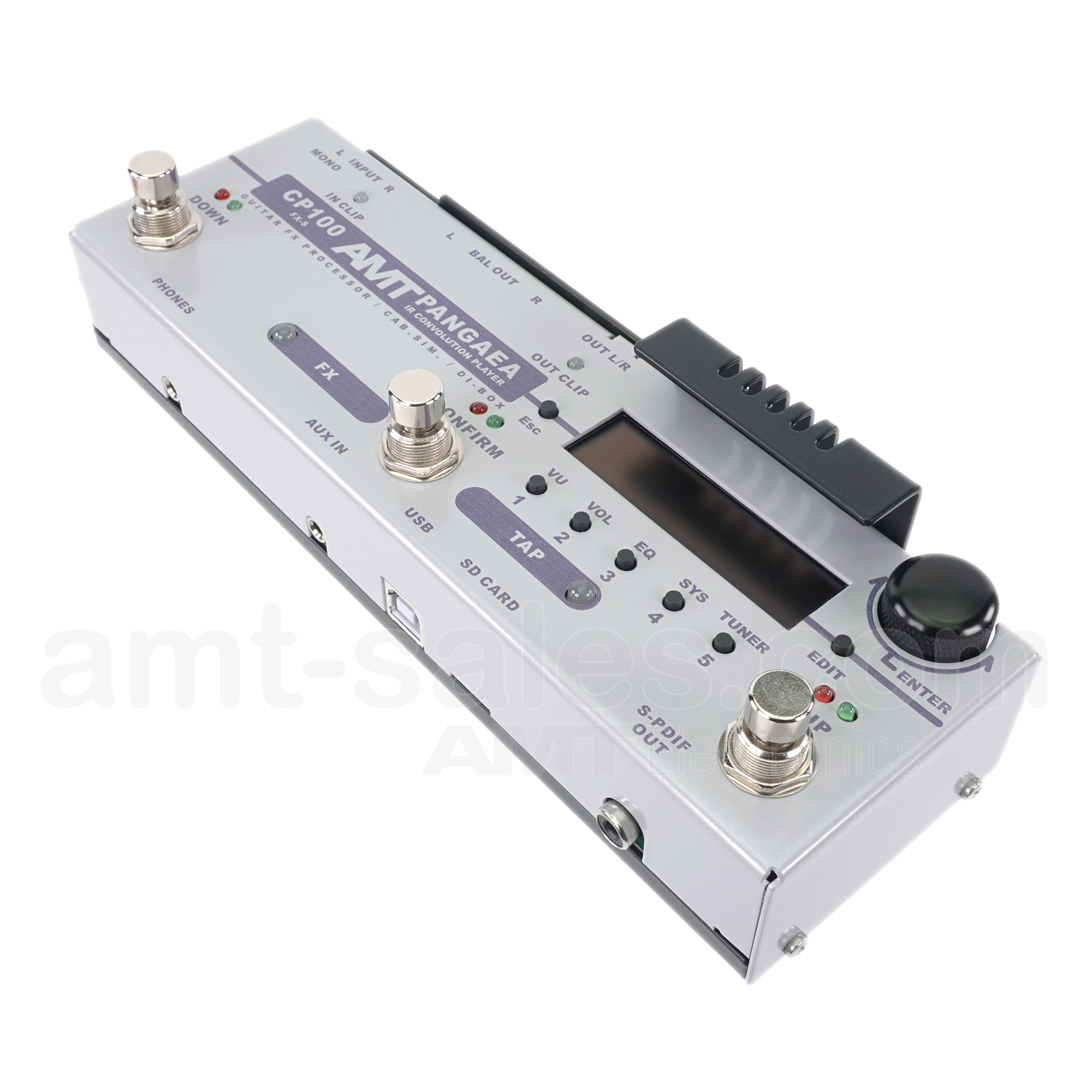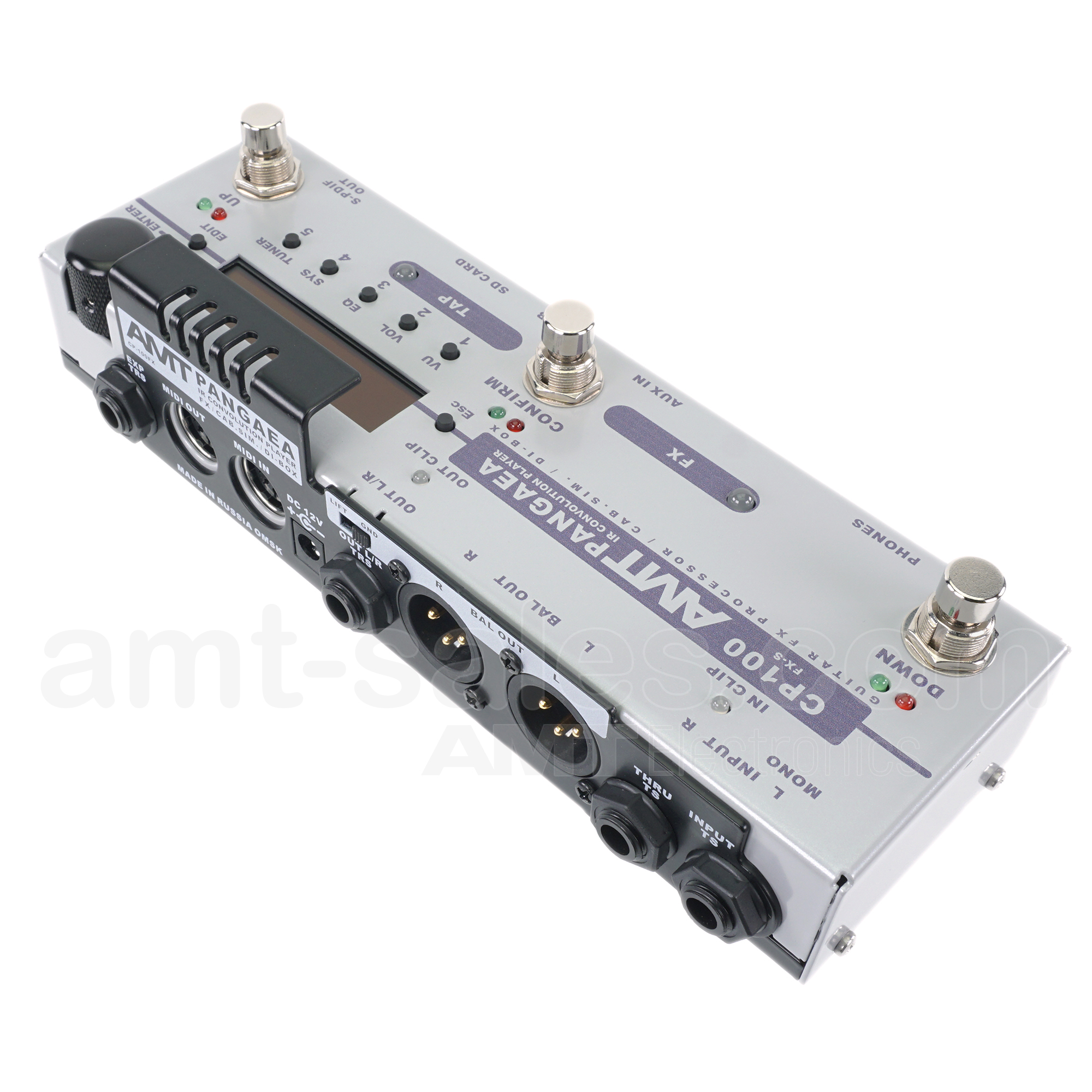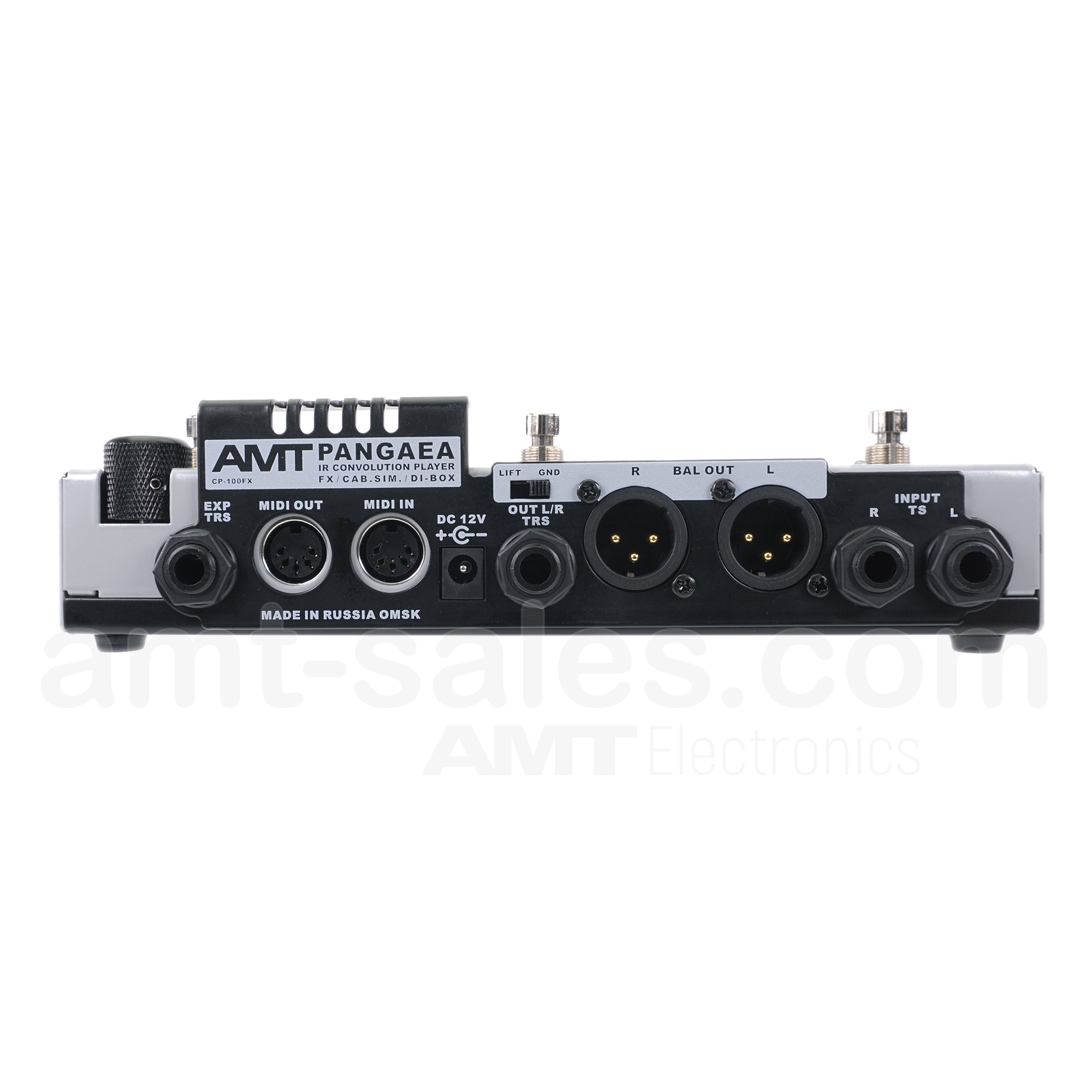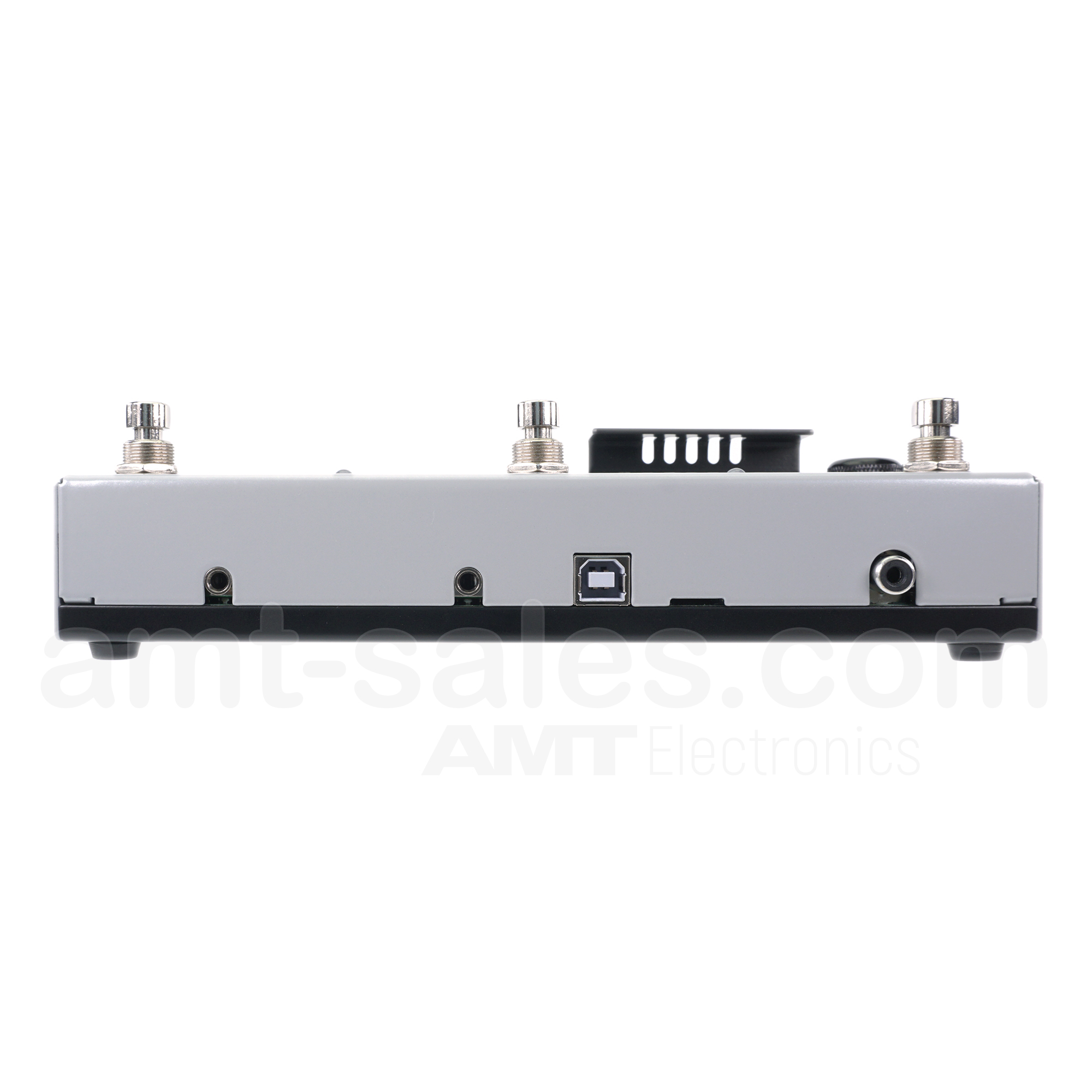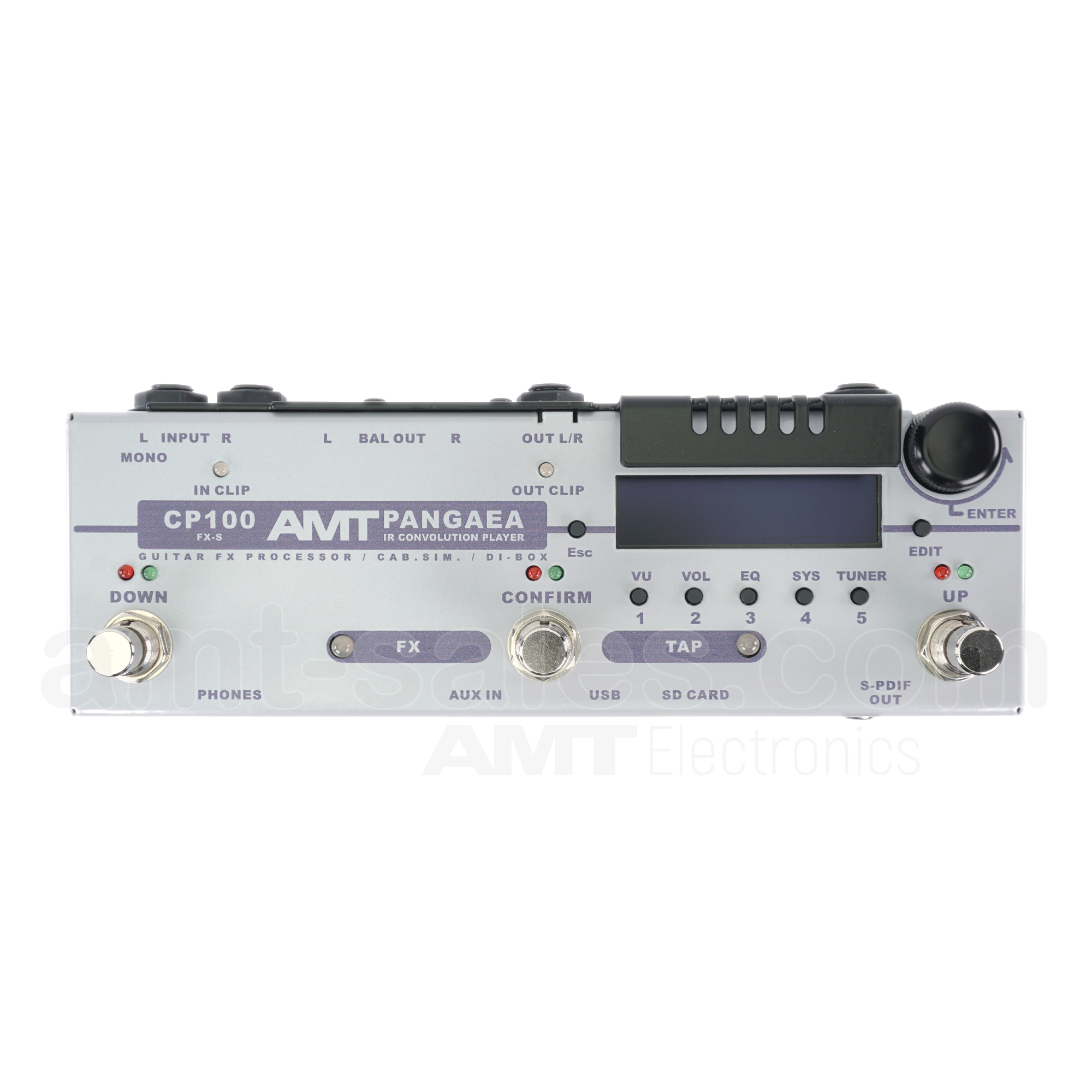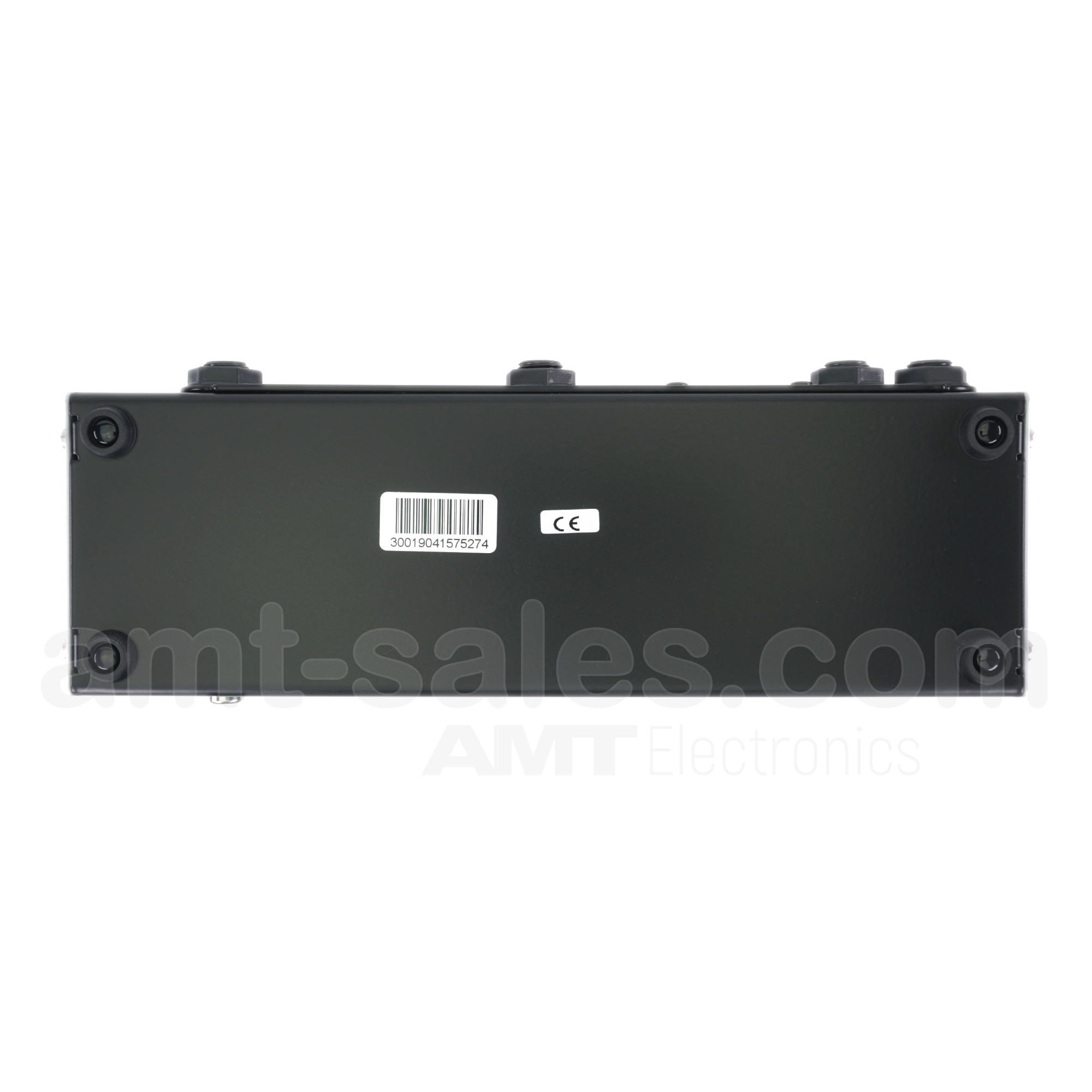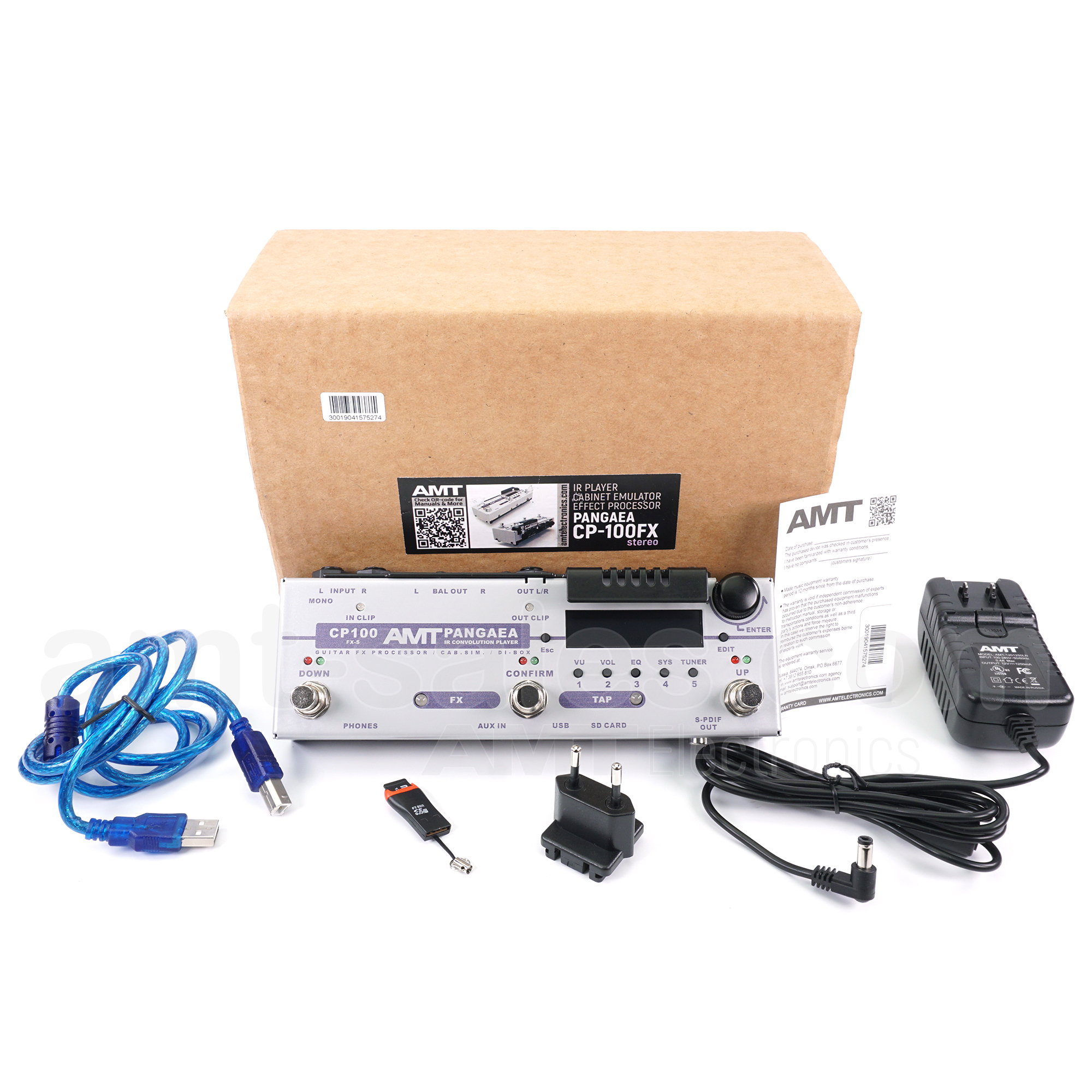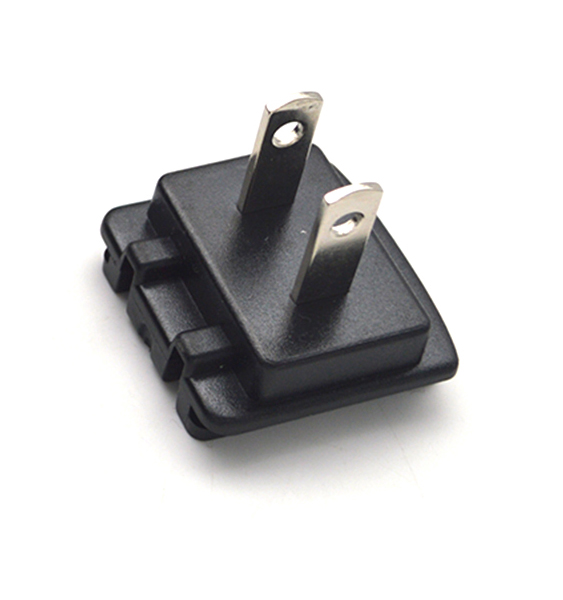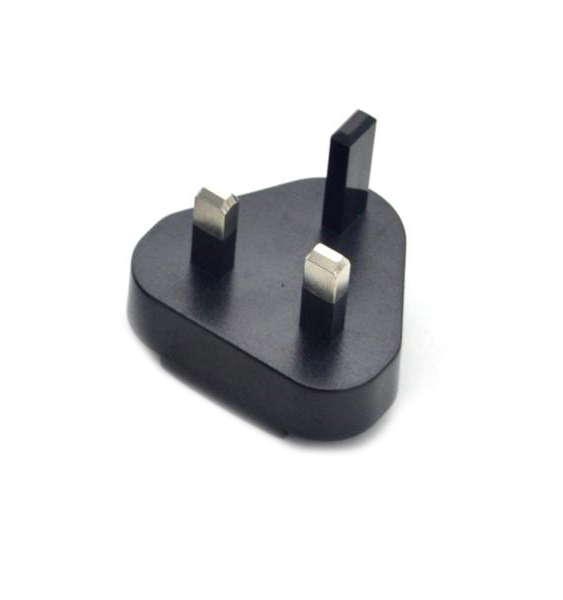AMT PANGAEA CP-100FX-S (stereo) - IR Convolution Player & Effect processor (+ power supply 12V with EU plug included!)
Video
Maybe you also need to purchase:
Descrizione
It seems for this device you also need to purchase:
AMT team is happy to introduce to you our new product AMT PANGAEA CP-100FX-S.
This is the full stereo version of the device.
Main differences between this AMT PANGEA CP-100FX-S device (stereo input / stereo output version) from the AMT PANGAEA CP-100FX device (mono input / stereo output version) are:
– the device with index “S” does not have a through output “THRU”;
– the device with the “S” index does not have an attenuator: the AMT PANGAEA CP-100FX-S device is designed to work together with your pedal board devices, so you can’t connect the PANGAEA FX-S (stereo version) directly to a power amplifier (for these tasks there is AMT PANGAEA CP-100FX);
– instead of the “THRU” output of the AMT PANGAEA CP-100FX-S, there is an additional input “R” (“right channel”), which makes it possible to use the full stereo path of the device if external stereo devices are connected to the CP-100FX-S. When the signal is connected only to the “L” input, the device will operate in the “mono input / stereo output” mode.
In other respects, the functionality of both devices is similar.
It is not just an impulse guitar cabinet emulator integrated with an effects processor: AMT PANGAEA CP-100FX-S is a flexibly adjustable tool both for professional actively touring guitar players and also for those who are just starting their creative career.
With the help of AMT PANGAEA CP-100FX-S you will be able to create a quality sound emulation of any guitar cabinet by loading appropriate impulse responses (IRs) of guitar cabinets. It is possible to store up to 99 presets into the internal memory of this device with different IRs together with built-in guitar effects processor (or without it).
AMT PANGAEA CP-100FX-S has a choice of two main modes of operation with IRs:
*MODE 1: Loading of one mono IR with following parameters: 24 bit х 48 kHz 170.75 ms long (8192 samples) with the total signal delay of 1.5 ms (milliseconds)
*MODE 2: Separate loading of two mono IRs with the same parameters as in MODE 1 adjustable for volume and pan with the total signal delay of 1.8 ms. Logically predictable interface of AMT PANGAEA CP-100FX-S, controllable with the help of OLED display and knobs, makes this device's operation convenient and comfortable.
AMT PANGAEA CP-100FX-S EFFECTS BLOCK CONTAINS THE FOLLOWING MODULES:
TUNER
Tuner for a musical instrument.
PR – Pre. Amp.
Emulation of pre-amplifier and overload of a vacuum triode: The pre-amplifier amplitude-frequency response (Pre.Amp.) is controlled by classic tone control stack, and GAIN control adjusts the pre-amplifier sensitivity. VOLUME parameter controls the output signal level shown by the indicator. This module (Pre. Amp.) is intended for connecting overload pedals without using any external Pre. Amp.
Main characteristics:
- five adjustable and stored parameters;
- Pre. Amp. output signal level indicator.
PA – Power Amp.
Emulation of overloaded power amplifier: Pre-installed set of a frequency responses of standard schemes of tube amplifiers of double and single-ended output stages with two types of vacuum tubes - 6L6 and EL34.
Main characteristics:
- four adjustable and stored parameters;
- Slave output signal level indicator.
EQ – Parametric EQ
5-Band Parametric Equalizer.
Main characteristics:
- Gain ±15db, F1=20-220Hz, Q1=0,1-10;
- Gain ±15db, F2=260-460Hz, Q2=0,1-10;
- Gain ±15db, F3=600-1000Hz, Q3=0,1-10;
- Gain ±15db, F4=1000-3000Hz, Q4=0,1-10;
- Gain ±15db, F3=1000-11000Hz, Q5=0,1-10.
HPF - high-pass filter.
LPF - low-pass filter.
Presence- a parameter that regulates high-frequency increase in the mid-frequency range.
DL – Delay
Delay (Audio delay effect with stereo output): Delay is an audio effect that records an input signal segment, and then plays it back after a period of time. The delayed signal may either be repeated once, or played back multiple times.
Main characteristics:
- the delay time ranges from 10 to 2730 ms;
- 12 (twelve) adjustable and stored parameters;
- two outlet taps independently adjustable for time, volume and pan. Primary signal delay with F_Back adjustable parameter and the secondary delay, the delay time of which is adjustable from 0 to the delay time of the primary one.
- delay outputs have LPF and HPF filters that apply only to the delayed signal;
- Frequency and depth control of delayed signal modulation;
- Reverse Mode - repeats are played backwards.
PH – Phaser
The effect gives a “swirl” to a sound, it is based on the phase shift of the signal.
Main characteristics:
- phase shift with 4, 6, and 8 cells;
- six adjustable and stored parameters.
FL– Flanger
The Flanger effect is based on the principle of a delay line with time-modulated output taps, as the Chorus effect, but it uses a shorter delay, adding regeneration (or repeats) to the delayed signal. This results in a more “colored” sound.
Main characteristics:
- adjustable delay time;
- two forms of modulated signal (sine or triangle).
CH – Chorus
The Chorus effect mimics the choral sound of musical instruments. The effect is achieved by adding its own copy(ies) to the original signal, shifted in time by the magnitude of 20-30 milliseconds, with the shift time changing continuously.
Main characteristics:
- five adjustable and stored parameters, four types of chorus effects:
1) a single delay line;
2) two delay lines, modulated by an anti-phase signal in the left and right channels, thus creating a stereo effect;
3) three delay lines, modulated by a three-phase sinusoidal signal, simulating the Leslie effect;
4) the same as point 3, except that in the left channel they are mixed with the direct signal in anti-phase, also creating a stereo effect.
ER – EarlyReflection
EarlyReflection – numerous early reflections of the signal. This effect gives the sound density and volume.
Main characteristics:
- two adjustable and stored parameters.
RV – Reverb (Reverberation)
Reverb (Reverberation) – effect creating a certain acoustic environment to the original sound by emulating a room or space with specified characteristics.
Main characteristics:
- seven adjustable and stored parameters.
TR – Tremolo
Effect of cyclic variation of the volume of sound.
Main characteristics:
- two types of modulating signal: sine or rectangle;
- four adjustable and stored parameters.
PERFORMANCE FEATURES OF AMT PANGAEA CP-100FX-S
In AMT PANGAEA CP-100FX-S all impulses are loaded from microSD card.
The device has a build-in file browser, which allows to «walk around» your card and listen to impulse sounds in real time. All impulses are stored on device's internal memory, in a particular preset - including settings for FX effects. Moreover, the internal memory access can also be made with the help of a PC via USB connection, for preset storage and exchange or loading of software updates. However, computer will identify the device - similar to AMT PANGAEA CP-100 - as general purpose "flash" storage drive.
Every preset has 16 controllers. So you can designate 16 key parameters (loudness, modulation rate, on/off parameters, etc.), which can be configured for any midi controller (or for an external expression pedal, for which there is a plug connector). Hence, you have a possibility to control 16 parameters in a single preset in real time. The expression pedal can be calibrated.
The device has a master volume and a three-band master equalizer, for volume and tone corrections in each particular case. The master equalizer can be switched off. On the side panel there is a S/PDIF output connector with two choices of output signal - master output or dry output (direct output from ADC).
General specifications:
A/D – D/A converters 24 bit;
Sampling frequency 48 kHz;
DSP block ADSP-21489 processor;
Concurrent effects 10;
Preset memory 99 user presets.
Power requirements:
AMT AC power adaptor: Input AC mains 100-265VAC, 50-60 Hz, output 12VDC (minus - center).
Consumption current: 230mA.
Media Center AMT
The User Manual and other additional materials for this device can be found in the AMT Media Center http://media.amt-sales.com/
Recensioni
Nessun messaggio trovato
Assistenza clienti
AMT e-shop
More information
Features
Contact
© 2016-2024 AMT Corporation S.R.L.



